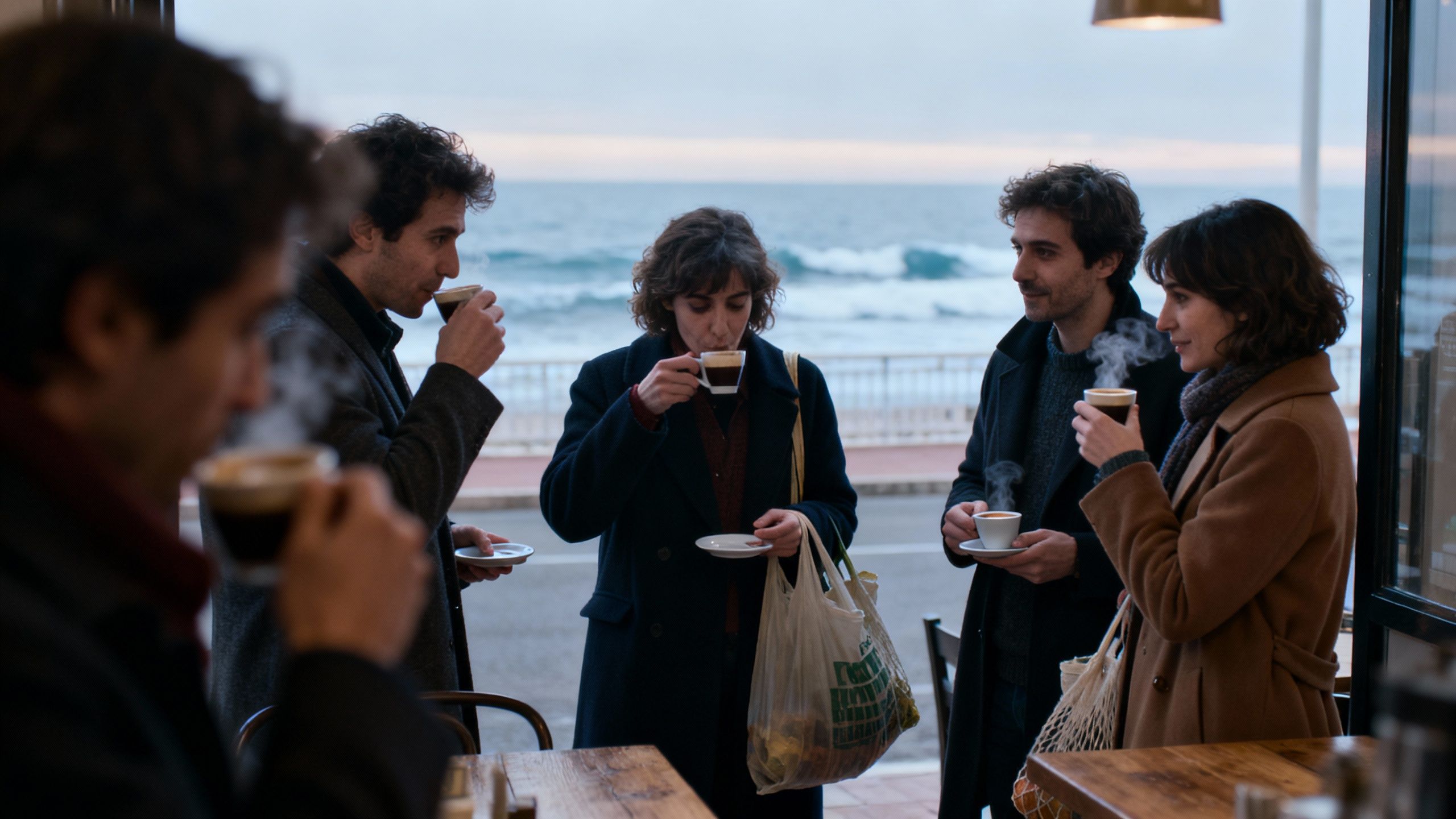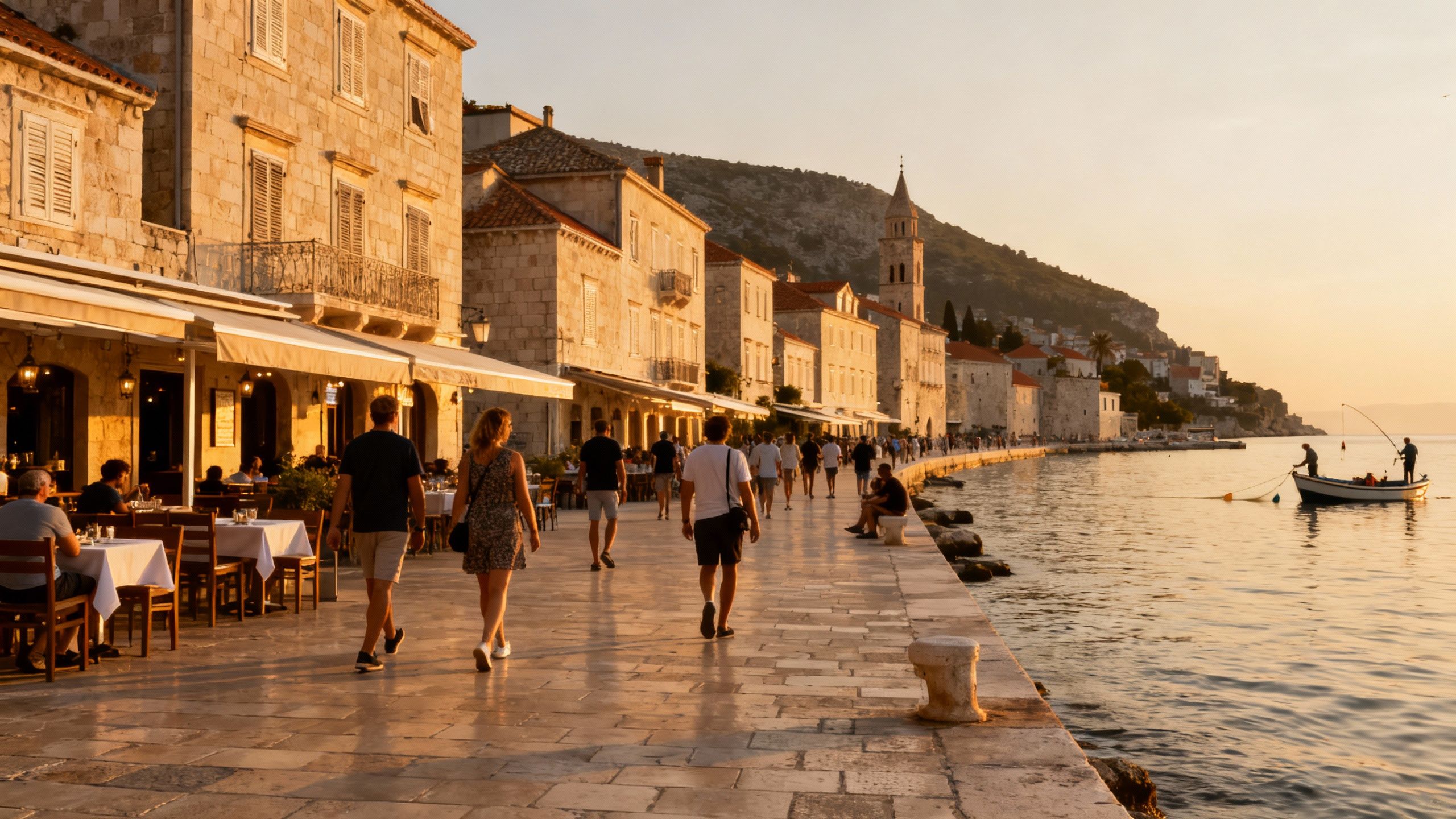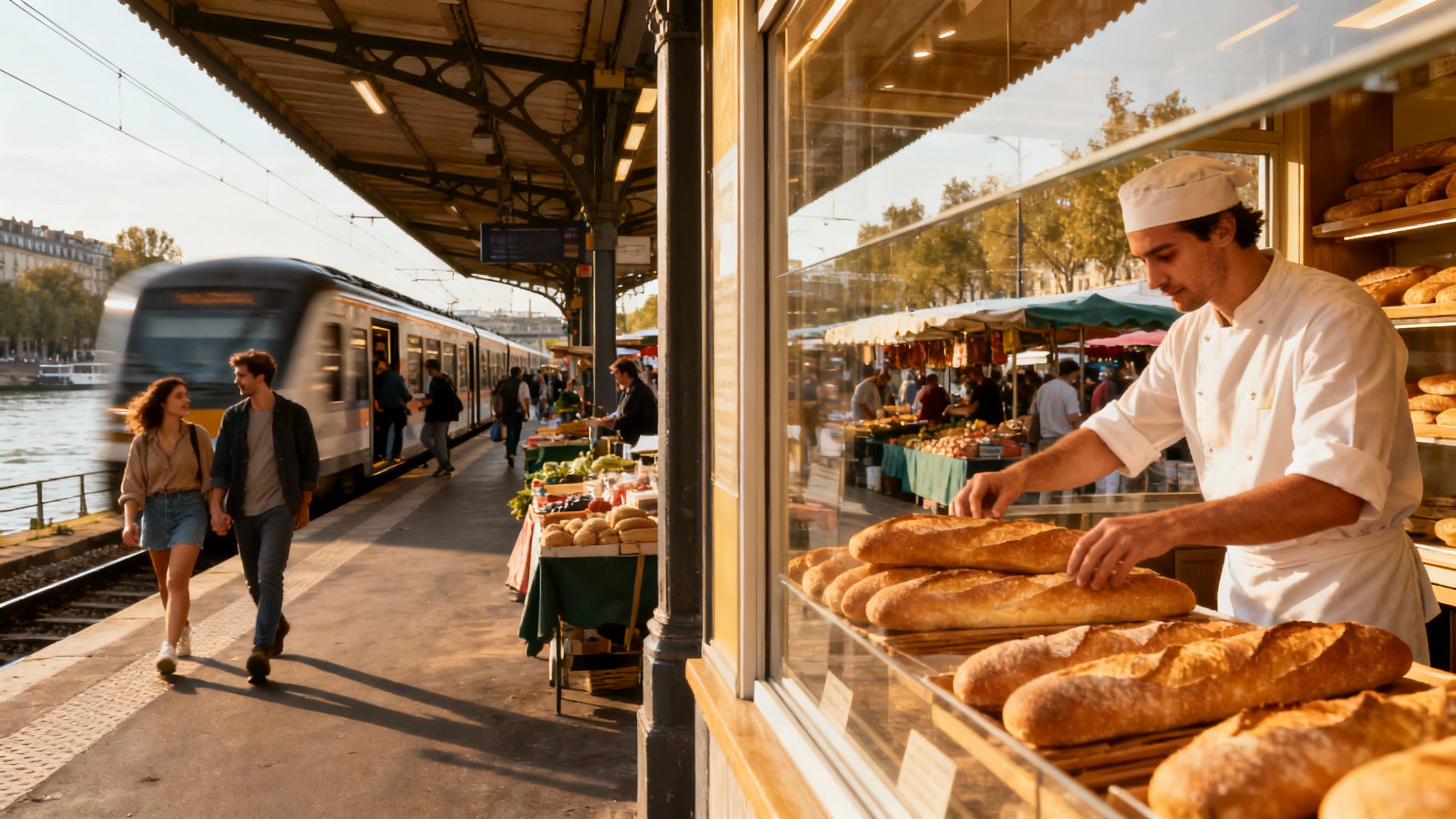Croatia Price Signals: Coastal Premiums & Tax Impact
Practical, data-led guidance on Croatia’s housing surge: coastal premiums, tax changes and neighbourhood trade-offs to match lifestyle with investment realities.
Imagine finishing your morning espresso on a narrow Dalmatian street, then walking ten minutes to a pebble beach where light breaks across limestone houses. That lived image is one side of buying in Croatia: immediate, sensory, convincing. The other side is numbers—price indexes, tax reforms and seasonal demand—that determine whether the dream is sustainable as an investment. This guide pairs both: vivid place detail up-front, then data-driven steps you can check and act on.
Living the Croatian Life: place first, purchase second
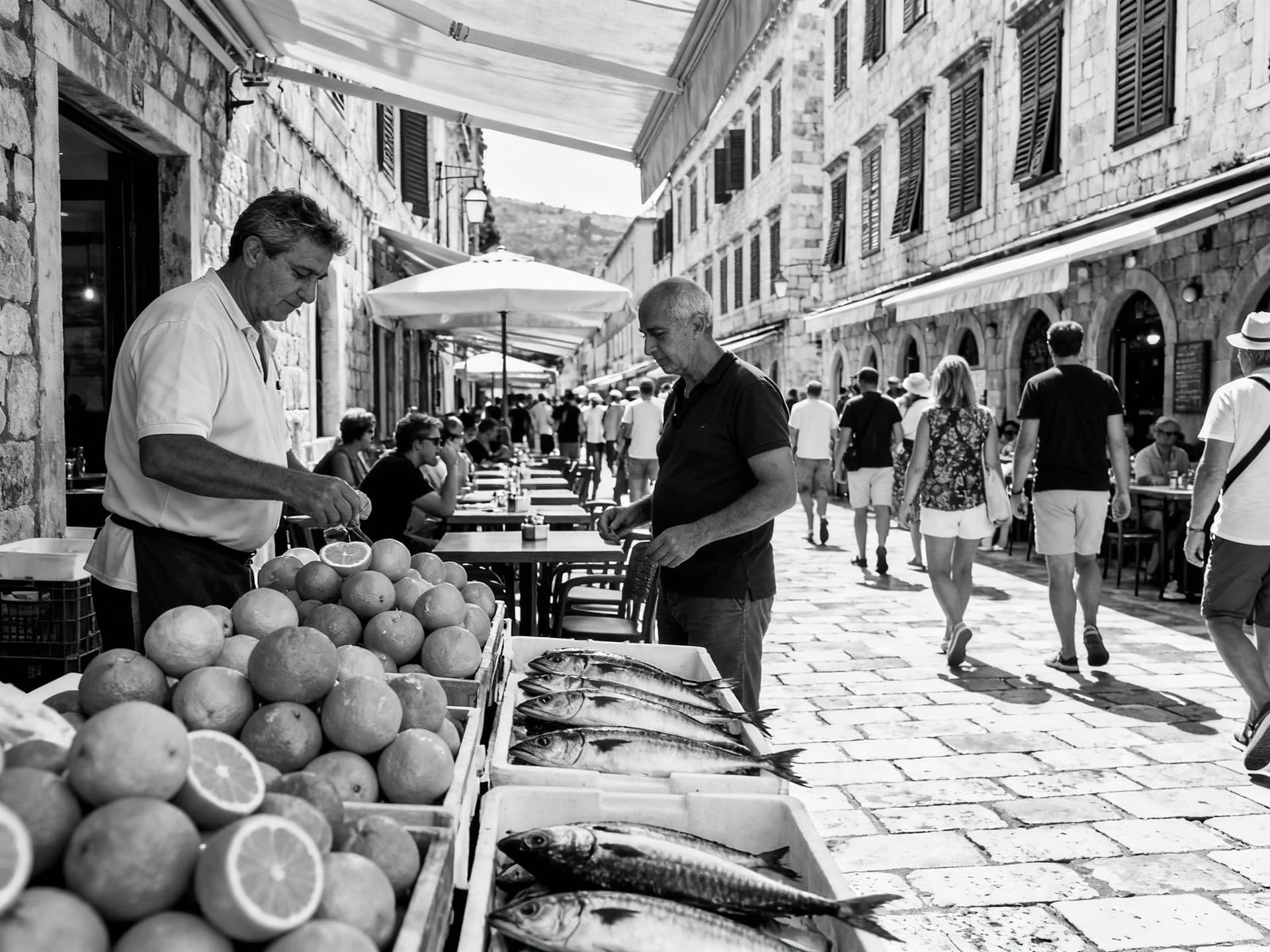
Life in Croatia is shaped by coastline and cadence. Morning markets spill citrus and grilled fish onto stone pavements; small cafés operate as community rooms where news and football results circulate. Cities like Zagreb pulse with urban routines — tram commutes, restaurants open late — while islands slow time to seasonal rhythms where summer defines activity and winter deepens local life. These patterns affect what you buy: central flats for year-round urban living, coastal houses for seasonal rental or personal use, and inland properties for lower purchase prices but different lifestyle trade-offs.
Zagreb, Split and Dubrovnik: distinct neighbourhood characters
Zagreb offers leafy neighbourhoods such as Maksimir and Britanski trg where cafés and galleries cluster and living is year-round. Split’s historic core centers on Diocletian’s Palace and the Riva; expect tourist season spikes and strong short-term rental demand. Dubrovnik’s Old Town is unique—protected, limited supply and correspondingly high prices—suitable for buyers prioritizing prestige over yield. Each city requires a different buying strategy: secure legal checks in Dubrovnik because of heritage rules, prioritise sound insulation and heating in Zagreb, and check seasonal access and infrastructure in coastal locales.
Food, festivals and the rhythm of the year
Weekends mean markets—Dolac in Zagreb, Pazar in Split—where local produce and conversation dictate social life. Summer brings music festivals, island ferries and a tourism-driven pulse that can double local population in hotspots. Winter is quieter; many coastal businesses scale down, which affects rental income and maintenance needs. When choosing property, consider whether you want full-season vibrancy or seasonal retreat: that choice changes expected cashflow, maintenance planning, and insurance considerations.
- Dolac Market (Zagreb); Riva promenade (Split); Buža bar cliff swims (Dubrovnik); Hvar old port evenings; Brac beaches and stone houses; Istrian hill towns and olive oil gastronomy
Making the Move: practical considerations that protect the lifestyle
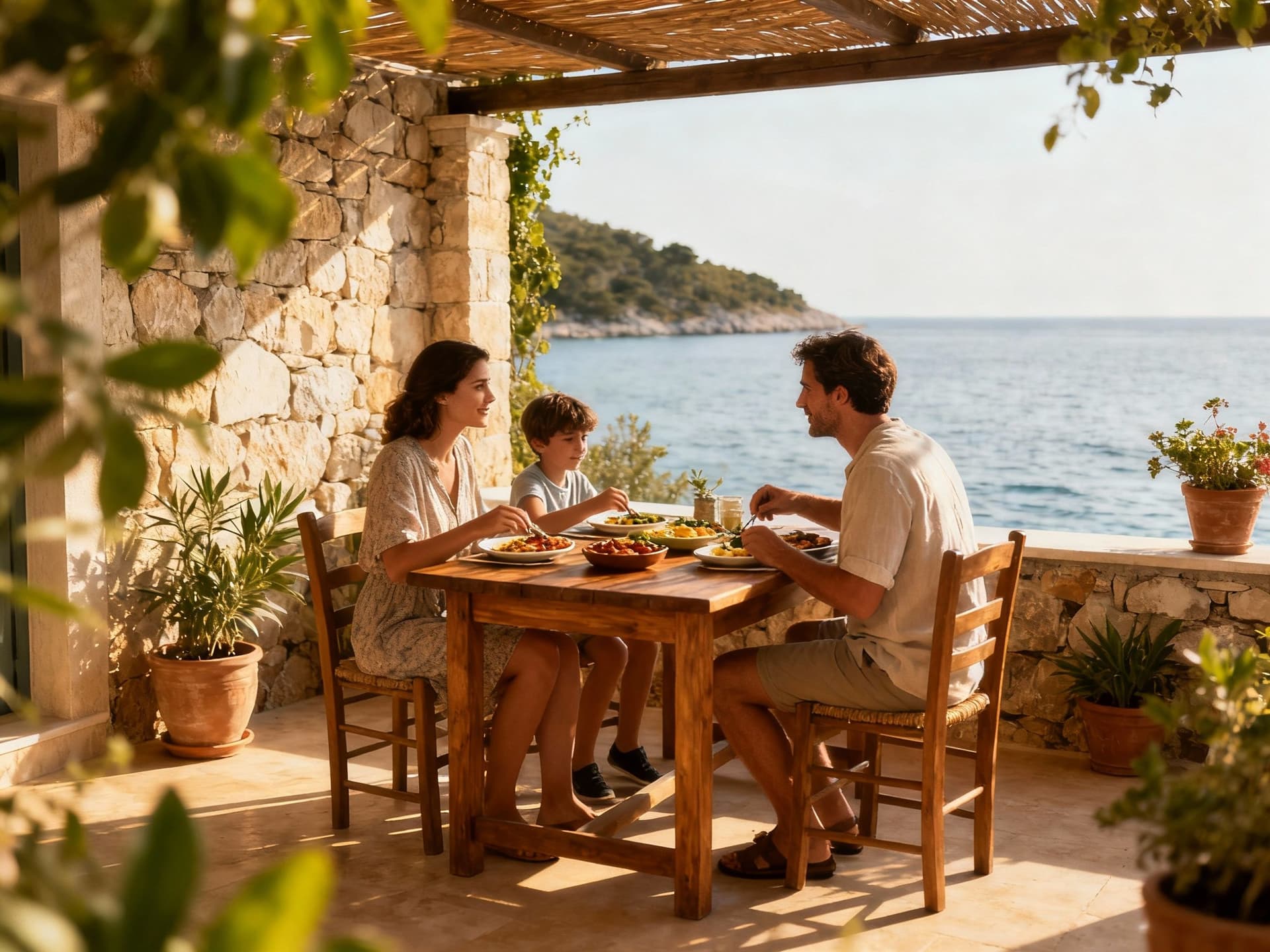
Croatia’s price momentum is measurable. The national house price index rose notably through 2024 and into Q1 2025, with quarterly increases and year-on-year growth reported by the Croatian Bureau of Statistics. Simultaneously, tax reforms and proposals targeting empty or short-term let properties are reshaping carrying costs for owners. Before bidding, confirm the latest local taxes, utility pricing and any municipal rules that affect rental exemptions or property levies.
Property types and what they mean for daily life
Stone houses on islands provide character and outdoor terraces but often need structural upgrades and higher maintenance. New-build apartments in Zagreb deliver modern systems and easier insurance and financing. Coastal apartments can offer strong short-term rental returns but face seasonal vacancy and stricter local zoning. Match property type to your use-case: primary residence, holiday home or investment. That match determines expected renovation budgets, insurance, and agent selection.
How local experts preserve the lifestyle you expect
Good local agencies do more than list properties; they validate titles, explain local permitting, and connect you with notaries and tax advisers. Look for agencies with demonstrated transactions in the exact neighbourhood you want. Ask for examples of cross-border clients, references for after-sale management, and a clear breakdown of fees. A competent local team helps convert lifestyle preferences—terrace morning light, proximity to market—into technical requirements in the search brief.
- Define your use-case; request audited recent sales in the street; verify legal ownership and encumbrances; obtain costed renovation estimates; confirm tax and short-term rental rules; secure a local notary and escrow arrangement
Insider Knowledge: what expats wish they'd known
Practical realities surface after move-in: seasonal businesses, maintenance logistics on islands and the administrative time required for residency or tax registration. House price indices show strong recent growth, particularly in new-build segments and in tourist hotspots, which raises entry costs and compresses yields. Many buyers underestimate recurring costs—from property taxes to road and ferry access in winter. Factor these ongoing costs into return calculations rather than focusing solely on purchase price.
Language, community and integration
Croatian is the official language; English is widely spoken in tourist areas and among professionals in larger cities. Attend local markets, cafés and municipal events to embed yourself quickly. Expat communities cluster around Split, Dubrovnik, Hvar and parts of Istria, which eases access to peer advice and practical services. Still, learning basic Croatian and hiring a local lawyer for contracts will reduce misunderstandings and administrative delays.
Long-term lifestyle and investment considerations
Croatia’s policy direction has signalled a shift toward taxing property to address housing availability and short-term lets. That affects yield models and long-term holding costs. If you plan to rent, especially short-term, model scenarios that include new property taxes and possible higher compliance costs. For owner-occupiers, consider durability and energy efficiency; those features reduce running costs and help preserve lifestyle year-round.
- Prioritise: verified title and cadastral plans; up-to-date energy/inspection certificates; insurance that covers coastal exposure; a local tax adviser; a maintenance plan for seasonal properties
- Decide preferred region and use-case; commission comparative market analysis from local agents; instruct legal due diligence; obtain financing pre-approval where needed; negotiate with contingent clauses for surveys and permits
Croatia offers a tangible lifestyle—market mornings, sea access and slow summers—paired with measurable investment opportunity where supply constraints meet rising demand. Use official data (Croatian Bureau of Statistics) and independent market reports to benchmark prices before engaging. Work with local legal and tax specialists, and insist on documented recent sales in your target street. If the lifestyle appeals, plan methodically: that combination preserves both the quality of life you pictured and the financial prudence you require.
Dutch relocation advisor who moved to Marbella in 2016. Guides Dutch buyers through visa paths, relocation logistics, and balance of lifestyle with value.
